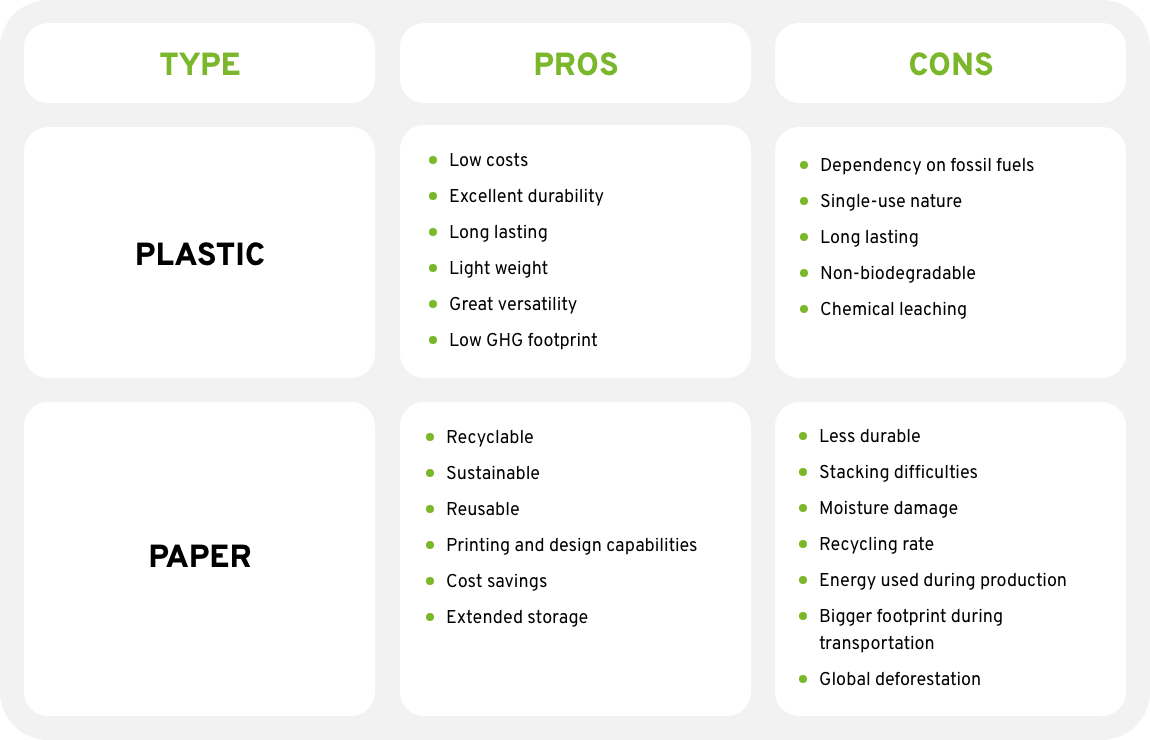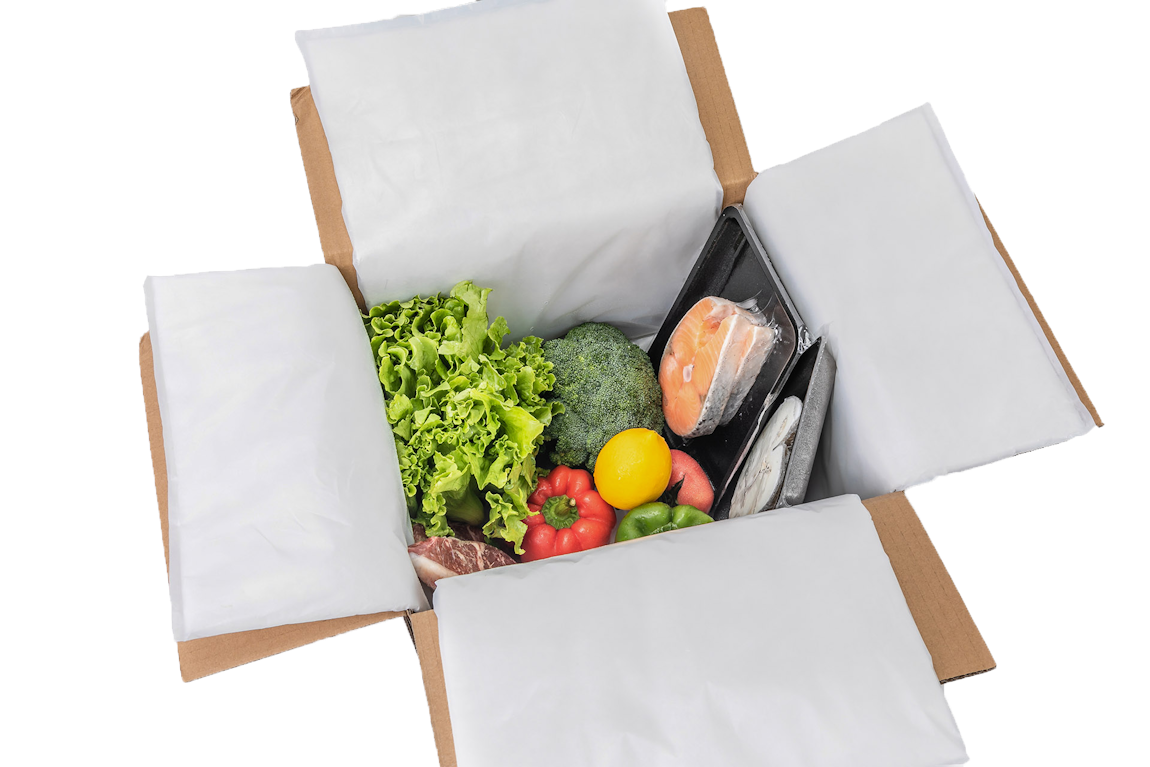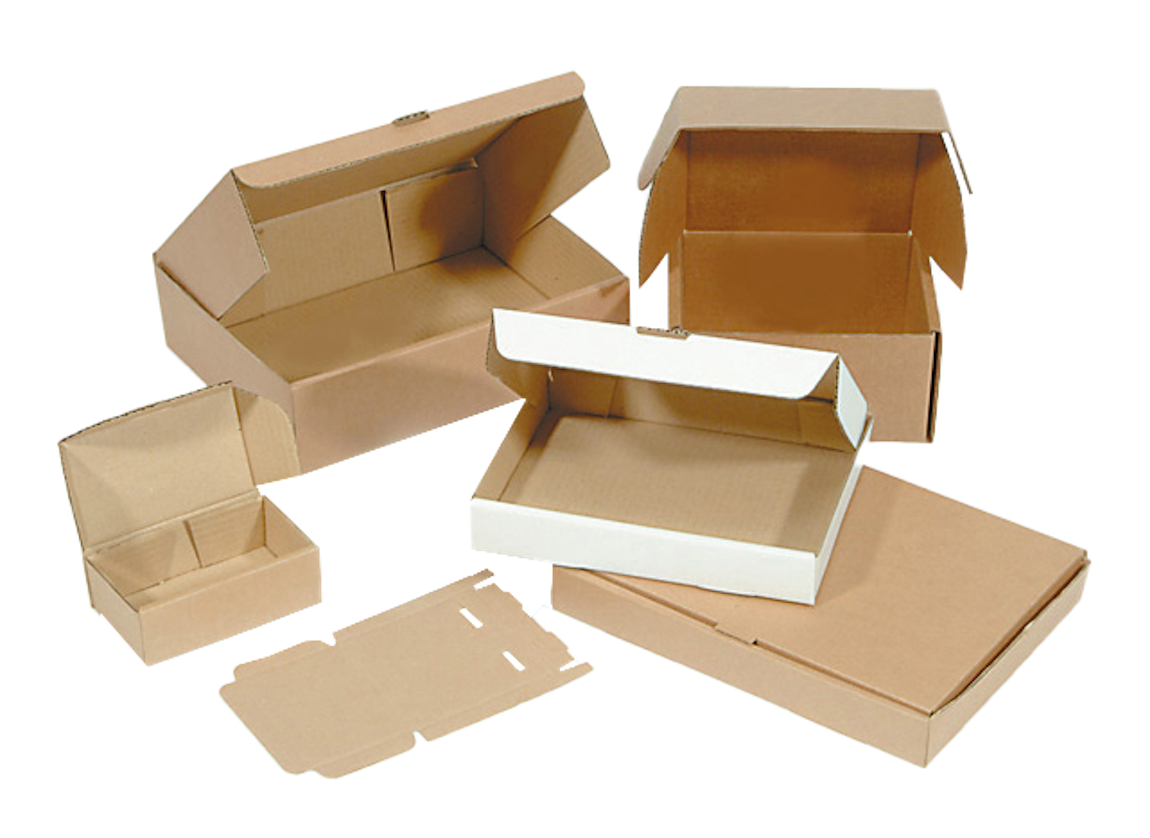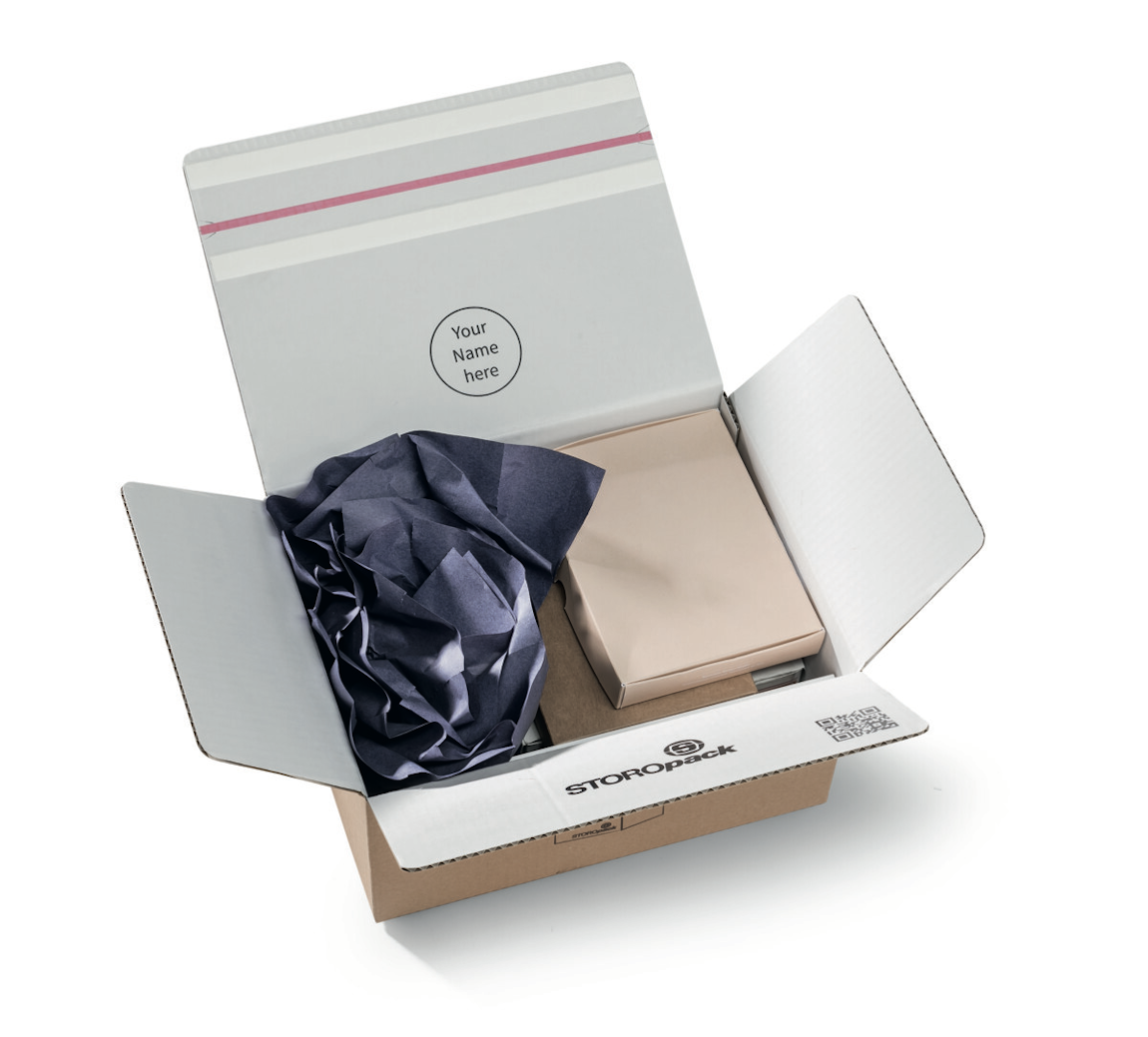Plastic
Plastics came into existence by accident in 1907, but it grew popular around the 1950s when high-density polyethylene was created. Plastics are made from fossil fuels which is clearly a non-renewable source. It is estimated that 4% of the world’s oil production is used as feedstock to make plastics, so this means plastic is often viewed as poor material in terms of renewability and sustainability.
However, it's not all doom and gloom with plastic. In recent times various reports from credible sources such as McKinsey have come out that plastic also brings certain benefits compared to other materials such as paper. The most sustainable approach is to look at the bigger picture, compare the pros and cons of the material and see them in the context of what situation the material is used.
The Plastic Pro’s
Although they are bad for the environment, there are a number of reasons why some may find plastics difficult to give up. These are as follows:
- Low costs: Plastic is the cheapest out of all common packaging materials.
- Excellent Durability: Plastics do not break or get damaged easily and can withstand falls or slight trauma without damage so provides great protection. Plastic packaging often does not get damaged when stacked on top of each other, making transportation of products easier.
- Long lasting: Plastic takes about a thousand years to break down, they can last for extensive periods without damage. However, as much as this is a pro, it is also a con.
- Light weight: Most plastic materials weigh almost nothing when compared to alternatives such as glass and wood, which is great in reducing the footprint when transporting products that are packaged with plastics.
- Great versatility: Plastic packaging has many forms that can vary from flexible and adaptable to sturdy and resilient types like plastic containers.
- Low GHG footprint: McKinsey tested plastic and non-plastic alternatives to look at the impact. Among applications for which nonplastic alternatives are used at scale, the plastics examined in their research offered lower total GHG contribution compared with alternatives in approximately 90% of cases.
The Plastic Con’s
Plastics may provide a number of easy advantages for businesses as mentioned above, but this does not mean the cons should be disregarded.
Plastic production is around 381 million tons and 5 trillion or more pieces of plastic are polluting the waters around the world. However, more consumers are demanding recycled content in plastic which is driving accelerated progress in recycling plastics. Some additional cons include:
- Dependency on Fossil Fuels: Plastic is primarily derived from fossil fuels, such as petroleum and natural gas. This contributes to carbon emissions and dependence on non-renewable resources.
- Single-use nature: A significant portion of plastic packaging is designed for single-use purposes, leading to excessive waste generation and resource consumption.
- Long lasting: As mentioned in the pro’s, it can take thousands of years to fully degrade, which is harmful to the environment when it does not end up in the recycling scheme.
- Non-biodegradable: Most plastics are not biodegradable, which means they persist in the environment and can accumulate over time, adding to the pollution in seas and other habitats across the world.
- Chemical Leaching: Some types of plastic packaging, especially those made with certain additives, can pose potential health risks when used around food and beverages.
Innovations in plastic recycling
It’s no surprise that plastic waste has become a global concern due to its impact on the environment and human health. However, advancements in plastic recycling technologies offer promising solutions to tackle this issue. Let’s explore some of these innovations and how they can improve the recyclability of plastic packaging.
Chemical recycling
One notable breakthrough in plastic recycling is chemical recycling. Unlike traditional mechanical recycling, which involves melting and reforming plastic, chemical recycling breaks down plastic into its molecular components. This process allows for the conversion of plastic waste back into its original building blocks, which can then be reused to produce new plastic products. Chemical recycling has the potential to recycle a wider range of plastic types, including mixed or contaminated plastics that would otherwise be challenging to recycle mechanically without separating beforehand.
Advanced sorting systems
Sorting plastic waste effectively is crucial for efficient recycling, especially with plastic packaging. Advanced sorting systems, such as artificial intelligence (AI) and robotic technologies, have revolutionised the recycling industry. These systems can accurately identify and separate different types of plastic based on their composition, colour, and shape. By automating the sorting process, these technologies increase recycling efficiency, minimise human error, and enhance the quality of recycled plastic.
Depolymerisation
Depolymerisation is another innovative technique that breaks down plastic into its monomers or basic chemical units. By using heat or solvents, plastic polymers are disassembled, allowing for the recovery of valuable monomers. These monomers can then be used as raw materials for producing new plastic products without losing their quality. Depolymerisation shows promise in enabling the recycling of plastics that are difficult to recycle through conventional methods.
Bioplastics
If for your company the pro’s outweigh the con’s, then it might be an option to consider bioplastics. Bioplastics are made from biodegradable sources such as vegetables, rice, and other organic and plant-based compounds.
Similar to other plastics, bioplastics are not currently recyclable, but they do break down much quicker than regular plastics, provided they are properly composted at in-home compost heaps or in extensive industrial compost facilities.
Bioplastics are usually much more efficient and eco-friendly than normal plastics and help contribute to the reducing of pollution.
At Swiftpak, we would recommend trying our polylactic acid (PLA) packaging as it is made from the renewable source, cornstarch, and so decomposes well in the presence of acids. PLA can be used for grocery bags, food packaging, thermal insulation as well as for medical applications.








